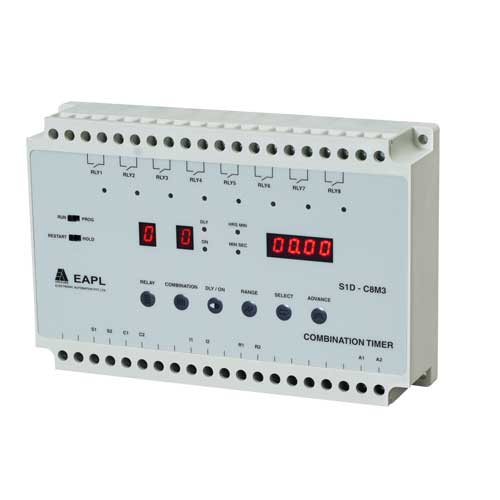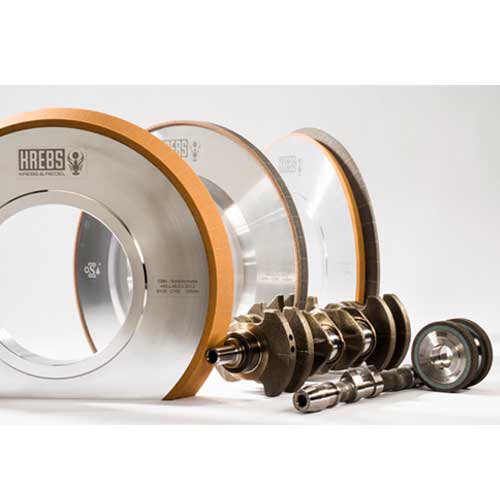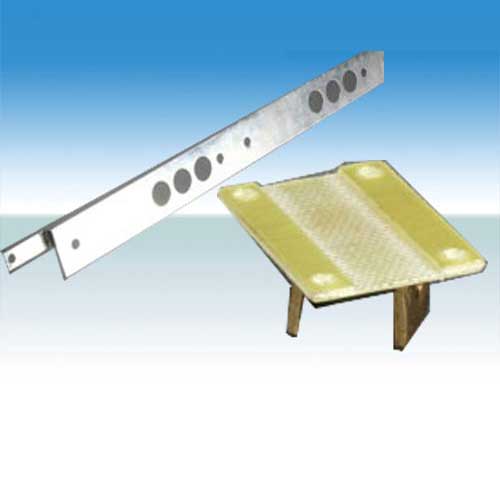Schedule a Call Back
Hexagonal crimps for aluminium and copper
 Technical Articles
Technical Articles- Feb 13,15
In daily practice hexagonal crimping is the most common kind of crimping of cable lugs and connectors. The reason is very simple - this type of crimp is suitable for both copper and aluminium conductors. Hexagonal crimps can be found in panel building industries as a manufacturer specific crimp and also as a DIN standard crimp for example in utilities (aluminium and copper).


Hexagonal crimping is widely used and is a standard application in all fields of electrical installations. Nevertheless a certain care should be considered. Faulty crimps can lead to considerable damages and in the worst case can cause fire.

Technically the hexagonal crimp is characterized by a centrical and constant force effect applied during the crimping operation from all sides and creating a larger contact area (Picture 1). The individual strands of the conductors are being deformed homogeneously in their entirety without any damage (Picture 2).

The results are good electrical properties of these connections. Mechanical and electrical properties of tubular and DIN compression cable lugs are being defined by the IEC 1238 part 1. It defines the requirements that an electrical connection has to fulfil for a permanent safe operation within intended applications. Apart from mechanical pull out tests also electrical durability tests are included.

The field of application of hexagonal crimps comprises the processing of conductors as per VDE 0295 classification (Picture 3):

- Class 1: round solid conductors
- Class 2: round stranded conductors
- Class 5: round fine stranded conductors, and
- Class 6: round finest stranded conductors

In addition hexagonal crimps per DIN 46235 resp. DIN 44267 can also be used for processing of non-tension and full tension connections of aluminium cables per DIN 48201 part 1 resp. of aluminium ropes per DIN EN 50182.

Important: The correct tool
For processing cable lugs per DIN 46235 crimping dies with die codes per DIN 48083 can be used. This combination enables hexagonal crimps per DIN 46235 and 46267. For hexagonal crimps of standard tubular cable lugs it is suggested to strictly observe manufacturers tool recommendations (Picture 1a). Hexagonal crimps are exposed to high loads. For this reason only high quality tools should be used which in addition feature special functions guaranteeing correct and safe crimps. Battery powered crimping tools of the latest generation give an acoustic warning if the required crimping force has not been reached. High quality mechanical crimping tools can only be opened when the crimping operation has been completed. Until then an integrated locking device blocks the tool. Back ground: A totally completed crimp is important as the required compression of the crimp material is only reached at the end of the crimp phase.

Preparation of a professional crimp

A professional hexagonal crimp generally requires use of crimping dies which match sizes of conductors and connecting material. That means that cable lugs resp. connectors need to correspond to the dimensions of the conductor and crimping die (Picture 4).

An incorrect combination can lead to low compression resp. excess compression crimps (Picture 5) with potentially fatal consequences: Faulty crimps can lead to increased contact resistance with rise of temperatures which in the worst case can cause fire (Picture 6).

For this reason manufacturers of branded products such as Klauke recommend for crimping operations their cable lugs and connectors solely use of their own appropriate tools. High quality crimping dies can be recognized by a polished surface with rounded edges (Picture 7). These crimping dies are precisely manufactured and guarantee a constant and neat deformation of copper resp. aluminium. It goes without saying: Prior to the crimping operation one has to make sure that the conductors need to be brushed to achieve a metallic clean surface and that oxide layers have to be removed from the aluminium cables. While stripping conductors it has to be observed that same are not being damaged and that bared length is more or less identical with insertion length of cable lug resp. connector. Crimping dies need to be clean and metallic bright. To avoid the incorrect die selection Klauke differentiates in colour, silver stands for aluminium dies and yellow gold for copper dies (Picture 8).

Tip: Klauke recommends to start crimping operations on cable lugs always from the palm towards the cable. In this case the compressed material can slide towards the cable end which hasn't been crimped (Picture 9).

Manufacturer specific hexagonal crimps
For hexagonal crimping operations we distinguish between two versions:

- The hexagonal crimp as per DIN 48043 part 4
- The manufacturer specific hexagonal crimp
Within the standard copper range the so called manufacturer specific hexagonal crimps are used for cable types as per VDE 0295 class 2 (Picture 10). Manufacturers with a reputation for quality such as Klauke offer hexagonal crimping dies for processing standard copper tubular cable lugs as per EN 13600 and approved connections as per IEC 1238. These cable lugs are being used for instance in the construction of electrical control cabinets because of design and smaller dimensions. To accomplish a professional crimp it is of great importance to use high quality tools. Only using such tools guarantee that a sufficient degree of compression is being achieved to insure optimum contact properties. To achieve an IEC approved connection it is necessary that all components used match each other. This concerns the cable lug and appropriate conductor but also the suitable appropriate crimping die and crimping tool - resulting in a safety engineered system. The classification of manufacturer specific crimping dies and cable lugs is - other than with DIN standard crimps - not controlled by die codes; it is rather regulated by the cross section of the cable - specified in mm2 (Picture 11).

Every manufacturer is responsible for the electrical durability of connections being processed with their products - specified tests have to be provided as evidence. As a professional and safe hexagonal crimping is dependent from an exact matching of crimping dies and cable lugs Klauke recommends for crimping their cable lugs solely use of their own tools as well. In case of special applications it is advisable to involve the preferably identical manufacturer of both tools and cable lugs. Brand manufacturers will perform - if required - for the specific application pull out tests (accelerated tests) as per IEC and where applicable also tests of the electrical contact resistance and recommend depending on the results adequate tools and materials. In particular when it comes to international projects and processing of specific cable types for instance in China or India IEC or customer specific standards can be complied with in terms of safety.

Standardised hexagonal crimping
The primary application of standardized hexagonal crimps is with electric utilities within a range from 1 kV up to 30 kV. The reason is the very homogeneous crimping which produces a consistent electrical field and consequently has a positive impact as to an unwanted field scattering. Other than with indent crimps hexagonal crimps do not show any mechanical indent of material which in case of electrical field control needs to be balanced with a conductive compound (Picture 12).

Copper cable lugs as per DIN 46235 and copper connectors as per DIN 46267 part 1 can be crimped with crimping dies as per DIN 48083 T4. For aluminium cable lugs as per DIN 46329 and compression connectors as per DIN 46267 part 2 and other aluminium connectors and cable lugs with appropriate tube dimensions as well hexagonal crimping dies as per DIN 48083 part 4 can be used. Hexagonal profiles as per DIN comply with the dimensional specifications of DIN cable lugs and are standardized within given tolerances. However, there are no specs given as to the crimp width which is either 5mm for copper or 7mm for aluminium. Identification marks on DIN cable lugs give important notes as to manufacturer, dimensions and design of cable lugs, which indicates the crimping tool resp. crimping die as necessity for crimping operations conforming to standards. This inscription is found behind the manufacturer code. For instance KL18 stands for
- KL: manufacturers code (in this case Klauke)
- 18: tool resp. die code
For a professional completion of a standardized crimp the tool code is decisive: The tool code of crimping die used has to conform with the tool code of the cable lug (Picture 13). The die code is engraved mirror-inverted on the crimp surface of the crimping die and once crimping operation has been completed it is visible on the cable lug (Picture 14).
Tool codes correspond approx with the tube dimensions of the cable lugs. For copper die codes range from 5 up to 58; this corresponds to cross sections from 6mm2 up to 1000m2. In the same way hexagonal crimping dies for aluminium and appropriate tube dimensions of these cable lugs and connectors are standardized.
Depending on the tool narrow or wide crimps can be used. On a cable lug of 50mm2 cross section for instance one has the alternative to do two narrow crimps or one wide crimp (Picture 15). Tools with a crimping force of up to 6t (60kN) are suitable solely for narrow hexagonal crimps of 5mm width on copper. Tools with a crimping force of more than 12t (120kN) are suitable for wide crimps according to manufacturers instruction. Usually the electrician prefers narrow crimps as tools are lower in weight and easier to handle. For cable assembly, however, wide crimps are preferred as they reduce the number of crimps required and consequently save time.
For standard tubular cable lugs mostly narrow crimps are being used. Mechanical and battery powered tools - lower in weight - and up to 60kN are being applied. A special feature is with aluminium cable lugs: To compensate the lower conductivity of aluminium compared with copper the narrow crimp in this case is 7mm. Also important: The DIN standard does not prescribe a specific crimp width either for copper or for aluminium. This information is given by the manufacturer by means of wide and narrow markings on DIN compression cable lugs. It should be observed that cable lugs resp. connectors and tools including crimping dies come from one single source, e.g. a brand manufacturer.
Prashant Mishra, Country Sales Manager, Klauke India, Adithi Enclave, 2ndFloor, No.29. 80 Feet Road, 4th Block, Kormangala, Bangalore 560 034. Tel: 080-25530007. Mobile: 097409-36006.
Related Products

Combination Timers
Electronic Automation Pvt Ltd offers a wide range of combination timers.

Cbn and Diamond Tools
Krebs & Riedel Abrasives India Pvt Ltd offers a wide
range of CBN and diamond tools.

Connectors
G R Enterprises offers a wide range of connectors.














